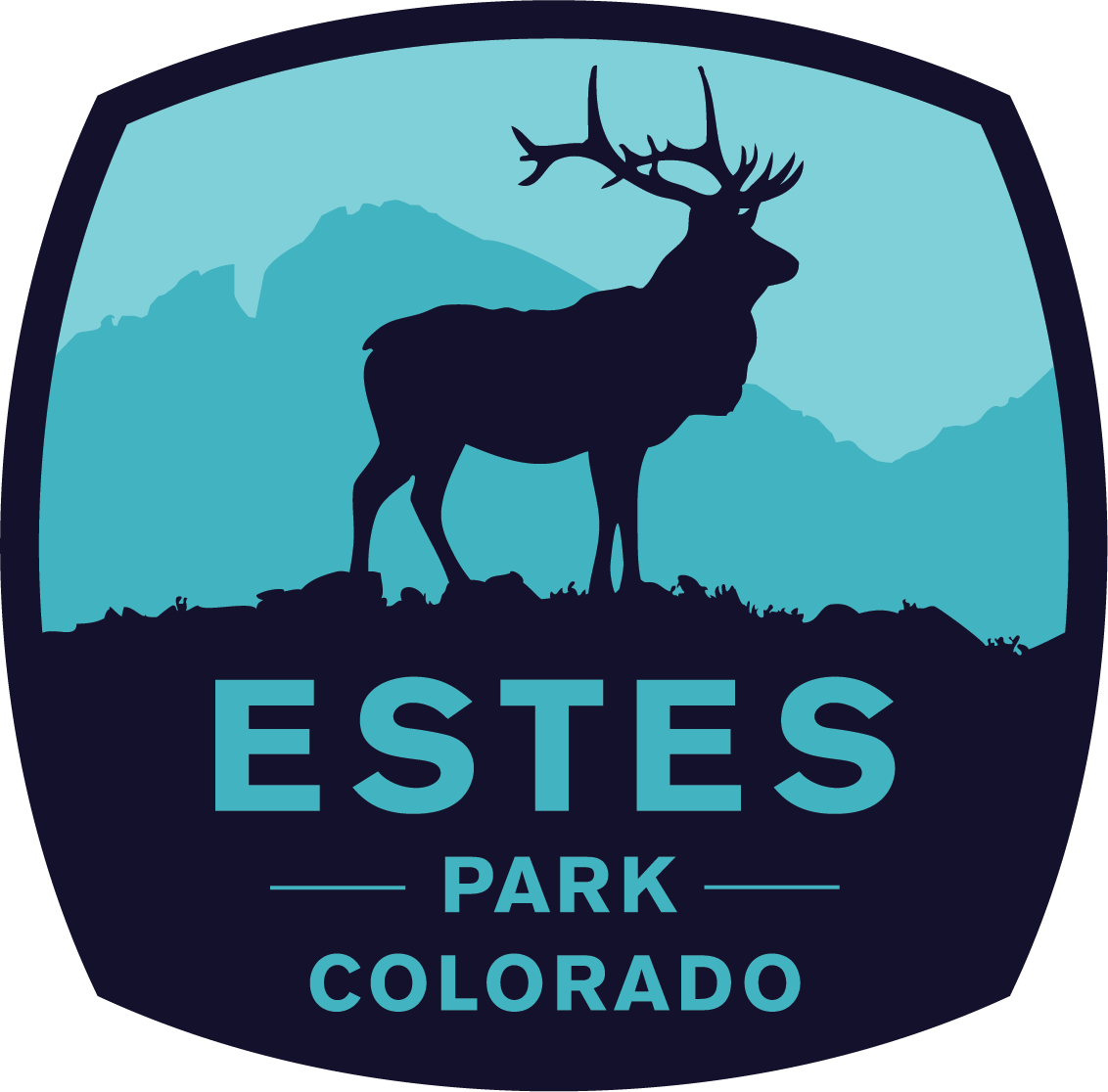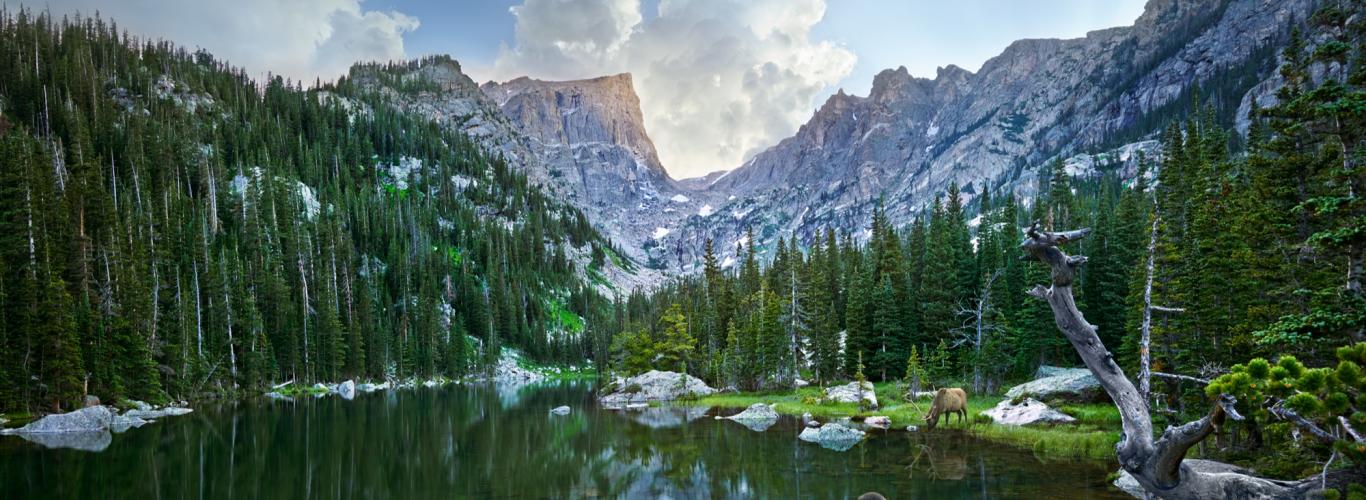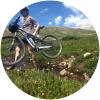Get your pod together for a round of trivia that will test your knowledge of the Estes area—and make you want to visit. Create your itinerary based on the answers that fascinated you the most, and make sure your visit includes a Tuesday night; it’s trivia night at the American Legion.
Questions
1—Name the historically famous mountain woman, progressive, travel writer and self-made outdoorswoman who put Estes Park on the map.
2—How many entrances into Rocky Mountain National Park are there in and around Estes Park?
3—True or false. Estes Park and Rocky Mountain National Park are the same.
4—The word park often causes confusion—in our neck of the woods at least—how many meanings are there for the word park?
5—Which mountain peaks in Rocky Mountain National Park are named for their distinctive shapes? Hint: there are three and they all end in “top”.
6—True or false: Estes Park closes in the winter.
7—What is the name of the defunct ski area in Rocky Mountain National Park?
8—Whose likeness watches over Bond Park in the form of a bronze sculpture?
9—An Estes Park favorite sweet-treat one might expect to find more readily in a seaside town.
10—How many art galleries and showrooms are there in Estes Park?
11—What is the unofficial mascot of Estes Park?
12—True or false: there is no mountain biking in Estes Park.
13–Name a must-read book featuring Estes Park.
14—True or false: Estes Park is pet friendly.
15—Name one of the tribes that inhabited Estes Park before settlers arrived, and the English translation of their name for the Estes Valley.
16—If we didn’t live here, what would we come here as visitors to do?
17—Name ways, other than driving, to go up Old Fall River Road.
18—Name as many ways to “leave no trace” when out on the trails in and around Estes Park as you can.
19—At 12,183 feet, this road is the highest continuously paved road in North America, connecting Estes Park and Grand Lake while taking a beautifully scenic route through Rocky Mountain National Park.
20—Deer, elk or moose: which is pictured below?

Answers
1—Isabella Bird. Bird, born in Victorian-era England, began traveling abroad at the recommendation of her doctor. What followed was a lifetime of traveling (often alone), humanitarian work, and wonderfully evocative letters home that were published as travel books. Read more about Bird and the seven reasons she should be your new role model.
2—7. While two are most well-known (and busy as a result) there are five others a short drive away that offer equally stunning views and an abundance of trails. Before you read more about the other Estes-area entrances into Rocky Mountain National Park tackle these bonus questions. Answers are at the end of this post.
Bonus question 1—What are the two most-traveled entrances into the national park?
Bonus question 2—How many of the other five entrances can you name?
3—False! We admit that the use of the word park in the names of two abutting destinations creates confusion. Here’s an easy way to think of it: Rocky Mountain National Park is federally protected land set aside to protect the natural and cultural resources within it. Estes Park is a town at the base of that national park, where you’ll find places to stay and eat, and a multitude of things to do, year-round.
4—4, at least. Learn about the many uses of the word park in Estes Park alone.
5—Flattop, Knobtop and Notchtop. Relatedly, there is also Thatchtop, which is named for its roof-like shape and the fact that its matted ground cover reminded someone of thatch, a matted layer of straw or reeds historically used to cover roofs. Find out how other area peaks got their names.
6—False. Estes Park doesn’t close, but it is an honest question that we hear, frequently. Reason number one Estes Park doesn’t close in the winter? We are a town, not a park (see answer number three!). Read more, including why you should visit in the winter.
7—Hidden Valley. Open from 1955–1991, Hidden Valley was a small ski area inside of Rocky Mountain National Park. Skiers reached the top with Poma and T-Bar lifts before a double chairlift was installed in 1971. Although closed, the area remains a favorite destination for backcountry skiers and sledders. Read an Ode to Hidden Valley, Rocky Mountain National Park’s Ghost Town Ski Area to learn more.
8—Enos Mills—and his dog, Scotch. Learn more about Mills, and the other bronze sculptures around town.
9—Taffy. You may have found yourself wondering, “what’s up with all the taffy?” when perusing downtown. So did the author of The History of Salt Water Taffy in Estes Park.
10—10. Located mostly along Elkhorn Avenue (Estes Park’s main street) galleries and showrooms showcase local Estes Park and Colorado artists. Create your own art walk.
11—Elk. Why? They’re majestic and interesting… and, well, there are a lot of them around here. Here are eight fascinating facts about elk.
12—False. Find out where one local mountain biker likes to ride, along with maps and detailed information about each trail.
13—If you said The Shining by Stephen King, then yes, we’ll take that answer—but that’s just one. You won’t be able to put down our hero Isabella Bird’s book A Lady’s Life in the Rocky Mountains or The Push by local climbing legend Tommy Caldwell. Check out the complete Estes Park required reading list.
14—True! And here is everything you need to know about traveling with your dog in Estes Park.
15—The Arapaho; The Circle. Want more? Translated to English, Longs Peak and Mount Meeker were called “two guides” and Mills Lake was called “calm lake.” Before you read on to find out what other favorite places in and around Estes Park were called in the Arapaho language, answer this bonus question: which natural feature in Rocky Mountain National Park retained its Arapaho name? The answer is at the end of this post.
16—Build a vacation around learning a new winter sport. Agreed, that wasn’t a fair question, but it’s an awesome idea, right?
17—Walking, running, biking. What you may not know about Old Fall River Road is that at certain times of year this graded, 11-mile dirt road is closed to vehicles. Walkers, runners and bikers look forward all year to taking advantage of the closure—it’s not every day that non-motorists get national park roads to themselves. Learn more.
18—Plan ahead and prepare, travel and camp on durable surfaces, dispose of waste properly, leave what you find, minimize campfire impacts, respect wildlife, be considerate of other visitors, and finally: pack it in, pack it out. What does all this mean? Find out here.
19—Trail Ridge Road. Learn more interesting facts about the road by reading this journey along Trail Ridge, a history of plowing the road, and other ideas on how to enjoy it.
20—Elk. These four-legged Cervidae family members often look similar to the untrained eye. Learn about the basic differences between deer, elk and moose, and where you’re likely to see them around Estes Park.
Bonus question answers
1—Beaver Meadows, Fall River Road
2—Wild Basin, Longs Peak, Lily Lake, Twin Sisters, Lumpy Ridge. Add these to your hiking/snowshoeing lists!
15—Lumpy Ridge. The Arapaho called it Lumpy Mountain.





